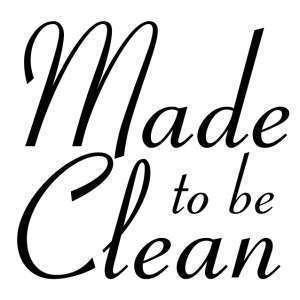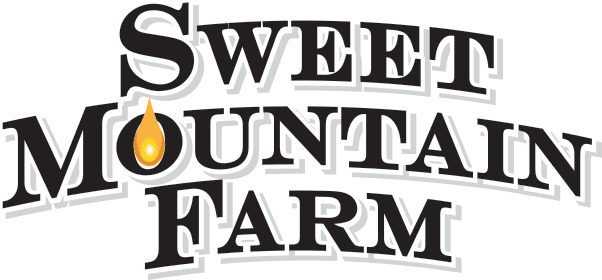Soap or Detergent a Flesh Perspective
 Soap or Detergent
Soap or Detergent
Surprisingly, some of today’s well-known, name brand soaps are NOT soap but detergents made with synthetic fragrances and other chemicals. These primarily petroleum-based ingredients can strip skin of essential moisture and dry out the skin. What’s worse, detergents labeled as soap may exacerbate already compromised skin conditions such as eczema. Detergents clean your skin, but do not seal in moisture like soap. Made to be Clean soap is purposefully and specially formulated with a variety of natural ingredients from plants, trees, herbs and flowers that help keep your skin healthy.
Environmentally friendly
Phosphates in commercial detergents are very harmful to the environment. Once phosphates are discharged into the waterways it promotes algae growth. These sudden algae blooms trigger a process called eutrophication in which water supplies become oxygen starved, where living organisms die – killing fish and aquatic life. Soap does not contain detergents and phosphates. The natural ingredients in handmade soaps are biodegradable and environmentally friendly.
What ingredients are in your soap?
Made to be Clean uses plant based oils and products from the beehive. We formulate each recipe according to the different properties of each oil, and we publish every ingredient so the consumer can make an informed decision. The colorants include natural botanical and clay. We never use mica or ‘mineral pigment’. We may add oatmeal, seeds or even flower petals to increase exfoliating. We use only essential oils and also offer naturally scented options. The International Fragrance Association (IFRA) establishes guidelines for safe usage, and works with the Research Institute for Fragrance Materials to determine guidelines based on scientific analysis.The amount of essential oils used in Made to be Clean products is always below IFRA safe usage recommendations.
Do you use lye? Is lye harmful to my skin?
All soaps are made with lye. If it does not have lye it is not soap but detergent. Our ancestors used wood ash to make potassium hydroxide lye by percolating rainwater through a barrel of wood fire ash. This method was not an exact science and so the soap often had lye remnants and was very harsh. Now, very pure sodium hydroxide lye is available and weighed to make sure an exact amount is used, nor more and no less. Most soap makers (myself included), use extra emolliating oil which insures that all the lye is used up in the processing stage. Soap makers call this technique “superfatting”. During the chemical reaction of making soap — called “saponification,” the lye and oil molecules combine and chemically change into soap and glycerin. Lye will still be listed on all labels since it was used in the process to create the final product as is required by labeling laws even though the lye is used up in the process..
Interesting note about lye
Lye has many uses in the food industry. The secret to great pretzels is often a lye bath! Lye gives pretzels their characteristic flavor, crispiness, and glossy finish. Lye is also frequently used in the preparation of olives and pickles. Scandinavian Lutefisk is whitefish that is dried and soaked in lye. Hominy is field corn soaked in lye.
Soap making method is cold process
The cold process method is the act of mixing oils with lye water. The result is a process called saponification, where the composition of the oils change with the help of the lye to create a bar of soap. Cold process soap requires a minimum of 4-6 weeks to cure on drying racks. The main benefit to this process is having complete control over the ingredients. Using cold process ensures that glycerin, which is a valuable by-product of the saponification process, remains in the finished soap. Manufactured soaps remove much of the glycerin for use in other, more profitable products.
Are Made to be Clean soaps “cruelty free”?
All Made to be Clean products are cruelty free. The only animal products used are honeybee products such as honey, beeswax, pollen and propolis. Honeybees came to the United States on the Mayflower as domesticated livestock. Honeybees do not survive in the wild long. A well managed colony will return a surplus of natural rejuvenating anti-bacterial, anti-fungal and anti-viral products. Made to be Clean also sources its hive products from natural chemical-free colonies. Our supplier is Sweet Mountain Farm, a small family run business that does not operate heavy extraction equipment. Each frame is removed by hand and the bees are brushed back into the hive. All soaps are vegetable oil (palm-free) and free of animal milk.
Does soap expire?
The question about soaps shelf life has always been tricky. My answer is, it depends. If you store soaps properly, they can last for centuries. Keep in mind, time does affect the intensity of soap fragrance.
Tips on storing soap:
Store unused soap in a covered container that is not airtight. Store in a cool, dry location.
Do not store extra bars in a bathroom. The air is too humid. Soap is a humectant. It draws water and contaminants in from the air which can cause soap to spoil. Keep stored soap out of direct sunlight. Natural ingredient colors will fade and sunlight can cause rancidification.
Tips on using soap:
Use a soap dish that provides drainage allowing it to dry out before the next use. In a low traffic bathroom cut a bar of soap in half and only bring half a bar to the soap dish. In a high use bathroom alternate two bars of soap every day to allow the soap to regularly dry out fully.
Some soap has a layer of white powder on it. Is that mold? Will that hurt my skin?
Sometimes a white powder film coats the top of our soap. This is called ‘soda ash’ and is harmless. It is common on the surface of cold process soap. It will rinse off the first time it is used.
If you have any questions about Made to be Clean products let us know!
